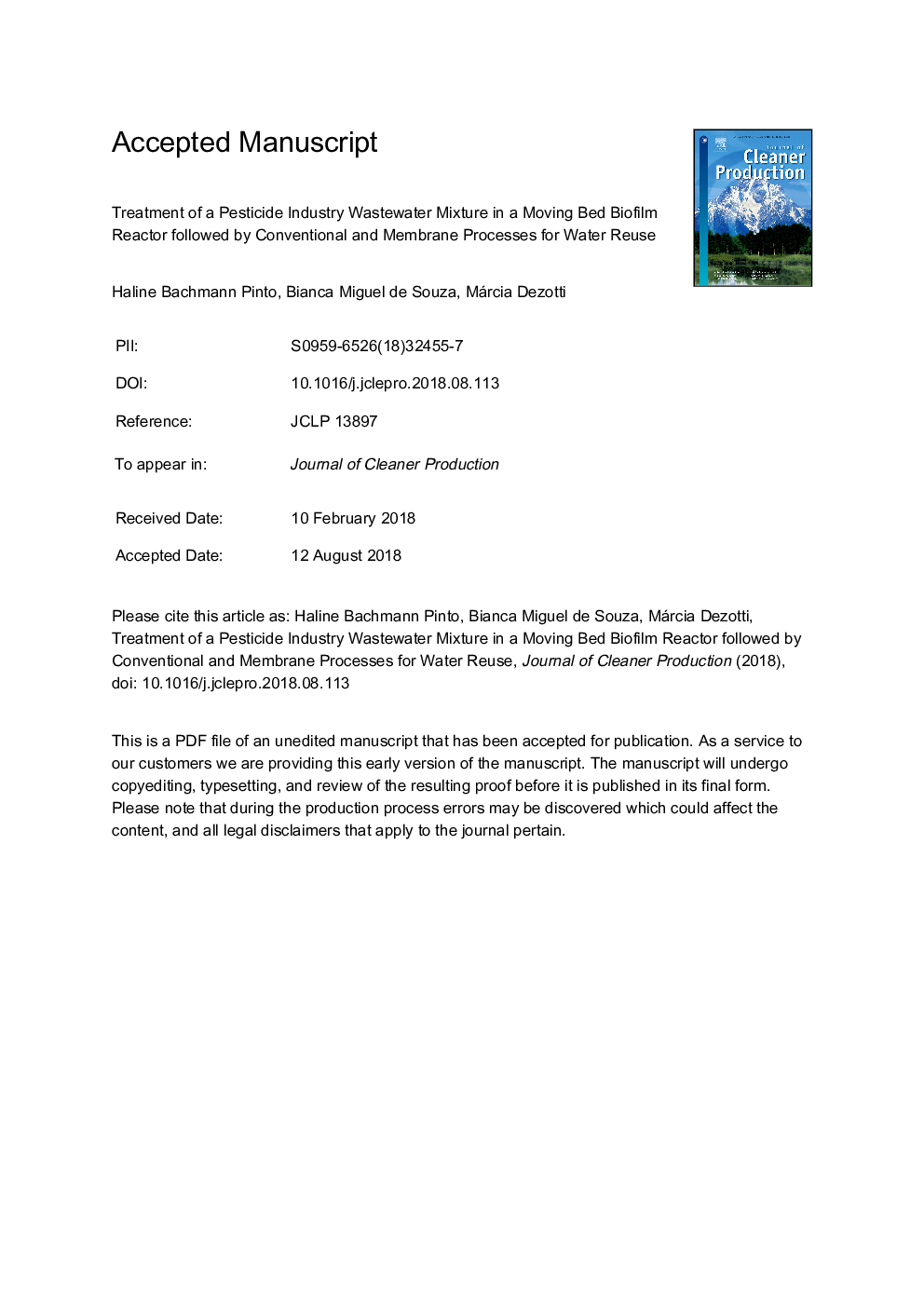| کد مقاله | کد نشریه | سال انتشار | مقاله انگلیسی | نسخه تمام متن |
|---|---|---|---|---|
| 8092970 | 1522051 | 2018 | 42 صفحه PDF | دانلود رایگان |
عنوان انگلیسی مقاله ISI
Treatment of a pesticide industry wastewater mixture in a moving bed biofilm reactor followed by conventional and membrane processes for water reuse
ترجمه فارسی عنوان
درمان یک مخلوط فاضلاب صنعت آفت کش در یک رآکتور بیوفیلم بستر حرکتی و سپس فرایندهای متعارف و غشایی برای استفاده مجدد از آب
دانلود مقاله + سفارش ترجمه
دانلود مقاله ISI انگلیسی
رایگان برای ایرانیان
موضوعات مرتبط
مهندسی و علوم پایه
مهندسی انرژی
انرژی های تجدید پذیر، توسعه پایدار و محیط زیست
چکیده انگلیسی
The treatment of an industrial wastewater (Efmix) composed of sanitary wastewater (91.5%), pretreated wastewater from pesticide production (3.8%) and hazardous waste landfill leachate (4.7%) was investigated in a moving bed biofilm reactor (MBBR) at a hydraulic retention time of 6â¯h. Treated effluent was then mixed with surface water (EfMBBR + SW) in a 1:9 volumetric ratio and physicochemical processes (coagulation/flocculation, sedimentation, rapid sand filtration and cartridge filter) were applied in lab-scale to reproduce the industrial water treatment plant and verify the efficiency of the combined process for wastewater reclamation. During the 90 days of operation, the moving bed biofilm reactor was efficient and stable regarding the removal of organic matter (64-89% in terms of chemical oxygen demand) and ammonium nitrogen (89-98%). Even with a fluctuating inlet chemical oxygen demand (230-721 mg/L), values below 100 mg/L were always achieved after biological treatment. Ammonium nitrogen (1.3 ± 0.6 mg NH4+-N/L) and nitrate (20â¯Â±â¯4â¯mg NO3â»-N/L) concentrations in treated wastewater showed that nitrification took place without inhibition throughout the bioreactor operation. Advanced treatment results indicated that a microfiltration or ultrafiltration unit must be coupled to the existing conventional reverse osmosis pretreatment in the water treatment plant in order to improve water quality concerning SDI15, turbidity and color, and thus allow for total reclamation of the industrial complex wastewater. An integrated conventional-microfiltration/ultrafiltration system could achieve high turbidity (99.9%) and apparent color (96.7%) removal to produce high quality water for reverse osmosis, minimizing membrane fouling problems and, consequently, the operational costs.
ناشر
Database: Elsevier - ScienceDirect (ساینس دایرکت)
Journal: Journal of Cleaner Production - Volume 201, 10 November 2018, Pages 1061-1070
Journal: Journal of Cleaner Production - Volume 201, 10 November 2018, Pages 1061-1070
نویسندگان
Haline Bachmann Pinto, Bianca Miguel de Souza, Márcia Dezotti,
